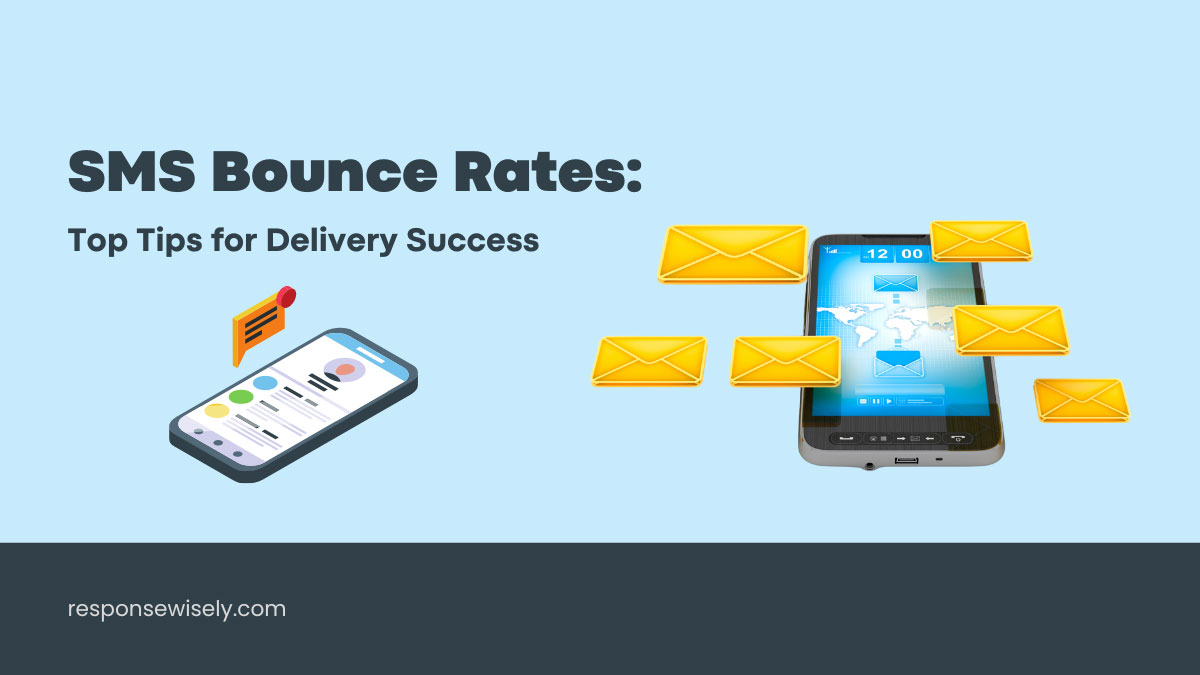As someone who has navigated the world of SMS marketing for years, I know how crucial it is to understand SMS bounce rates and delivery issues. When your messages don’t reach your audience, it can hinder your marketing efforts and impact your ROI. In this text, I’ll investigate into the complexities of SMS delivery, helping you grasp the nuances that can make or break your campaigns.
From soft bounces to hard bounces, there are various factors that contribute to undelivered messages. By unraveling the mysteries behind these bounce rates, you’ll be better equipped to optimize your SMS strategy and ensure that your messages reach the right recipients. Stay tuned as I share expert insights and practical tips to enhance your SMS deliverability and boost engagement with your target audience.
Overview of SMS Bounce Rates
What is an SMS Bounce Rate?
An SMS bounce rate is the percentage of undelivered messages out of the total number of messages sent in an SMS marketing campaign. It reflects the effectiveness of reaching the intended recipients and plays a crucial role in assessing campaign success.
Types of SMS Bounces
There are two main types of SMS bounces:
- Soft bounces: Temporary delivery issues, like a full inbox or a phone turned off.
- Hard bounces: Permanent delivery failures due to invalid numbers or blocked recipients.
I’ll investigate deeper into each type to help you understand how to address these issues in your SMS marketing strategy.
Common Delivery Issues
Sender Reputation
When it comes to Sender Reputation, it plays a crucial role in SMS deliverability. Maintaining a positive sender reputation involves sending relevant content to engaged recipients and avoiding spammy practices. By building trust with SMS carriers and recipients, I can improve deliverability rates significantly.
Content Filtering
Content Filtering mechanisms are used by mobile carriers to screen out potentially harmful or irrelevant messages before they reach recipients. To ensure my messages avoid being flagged, I carefully craft SMS content that is relevant, personalized, and complies with regulatory guidelines. This helps in increasing the chances of my messages reaching the intended audience.
Opt-in Compliance
Opt-in Compliance is essential for maintaining a healthy SMS marketing strategy. Obtaining consent from recipients before sending messages not only ensures compliance with regulations but also increases engagement rates. By focusing on building a permission-based subscriber list, I can avoid deliverability issues associated with unauthorized messaging.
Best Practices to Reduce Bounce Rates
Clean and Updated Contact Lists
Maintaining Clean and Updated Contact Lists is essential to reduce bounce rates. By regularly scrubbing your contact database, you ensure that you are sending messages to valid and active phone numbers. This practice not only improves deliverability but also helps in maintaining a positive sender reputation.
Personalized Messaging
Crafting personalized messages can significantly reduce bounce rates. By addressing recipients by their names and tailoring content based on their preferences, you increase the chances of engagement and decrease the likelihood of messages being marked as spam. Personalization shows recipients that you value them as individuals, fostering a stronger connection.
Monitoring and Analytics
Utilizing monitoring tools and analytics is crucial in identifying and addressing bounce rate issues. By tracking delivery metrics such as open rates and click-through rates, you can gain insights into the effectiveness of your campaigns and make necessary adjustments to optimize deliverability. Regularly monitoring and analyzing data allows you to stay proactive in combating bounce rates.
Key Takeaways
- SMS bounce rates are crucial metrics in assessing the effectiveness of your SMS marketing campaigns.
- Understanding the difference between soft bounces and hard bounces can help you address delivery issues more effectively.
- Maintaining a positive sender reputation is key to improving SMS deliverability and reaching your target audience.
- Crafting personalized messages and keeping contact lists updated are essential practices to reduce bounce rates.
- Monitoring delivery metrics and utilizing analytics tools can help you optimize your campaigns and stay proactive in tackling bounce rate issues.
Conclusion
To conclude, reducing SMS bounce rates is crucial for successful marketing campaigns. By maintaining updated contact lists, personalizing messages, and utilizing monitoring tools, marketers can enhance deliverability and engagement. Implementing these best practices not only improves campaign effectiveness but also safeguards sender reputation. Stay proactive and attentive to delivery metrics to continuously optimize SMS strategies and mitigate bounce rates. Remember, a clean and targeted approach is key to maximizing the impact of your SMS marketing efforts.
Frequently Asked Questions
What are some best practices to reduce bounce rates in SMS marketing campaigns?
Maintain clean and updated contact lists, personalize messages, and use monitoring tools and analytics to track delivery metrics.
Why is maintaining clean contact lists important in reducing bounce rates?
Sending messages to valid numbers improves deliverability and sender reputation, ultimately decreasing bounce rates.
How can personalizing messages help decrease bounce rates?
By tailoring content to recipients’ preferences and addressing them by name, personalized messaging can increase engagement and lower bounce rates.
What role do monitoring tools and analytics play in reducing bounce rates?
Monitoring tools and analytics allow tracking of delivery metrics like open and click-through rates, enabling optimization of campaigns and proactive bounce rate management.

